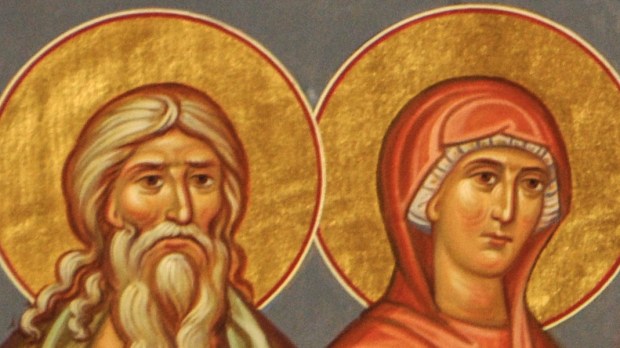Lenten Campaign 2025
This content is free of charge, as are all our articles.
Support us with a donation that is tax-deductible and enable us to continue to reach millions of readers.
While the canonization process in the Roman Catholic Church did not become formalized until the 16th century, Catholics were in the habit of calling upon the intercession of various Old Testament figures since the very beginning of Christianity.
In the first few centuries local churches would record names of martyrs and other holy men and women and put them on a calendar for future remembrance.
In the Roman Church, this became known as the Roman Martyrology.
According to Fr. Thomas Kocik in an article for Adoremus, over time this martyrology was expanded to include more saints than those celebrated in the local church:
Among the general martyrologies the best known is the Hieronymian, so called because it was, albeit falsely, attributed to St. Jerome (347-420). Compiled in northern Italy in the mid-fifth century and revised in Gaul around 600, the Hieronymian Martyrology as it has reached us combines a list of martyrs and popes venerated at Rome (dating to 354), a series of local martyrologies of Gaul, some literary sources such as Eusebius of Caesarea’s Ecclesiastical History (early fourth century), and general martyrologies of Italy, Africa, and the Eastern Churches. It consists of some ten thousand saints, in most cases with no further information than the place where they were commemorated.
The Roman Martyrology has been revised and trimmed down throughout the centuries (most recently in 2004), but it still contains specific days that commemorate Old Testament saints.
The Catechism of the Catholic Church affirms this tradition, “The patriarchs, prophets and certain other Old Testament figures have been and always will be honored as saints in all the Church’s liturgical traditions” (CCC 61).
Here is a list of all those Old Testament figures who have been assigned a feast day in the Roman Rite of the Catholic Church.
These feasts are not celebrated publicly on the General Calendar of the Roman Rite, but are still listed on the official Roman Martyrology of the Vatican (published in 2004). In fact, according to Kocik, “On ferial days and on days that admit celebration of the optional memorial of a saint, one may celebrate the Office and Mass of any saint ascribed to that day in the Martyrology.“


